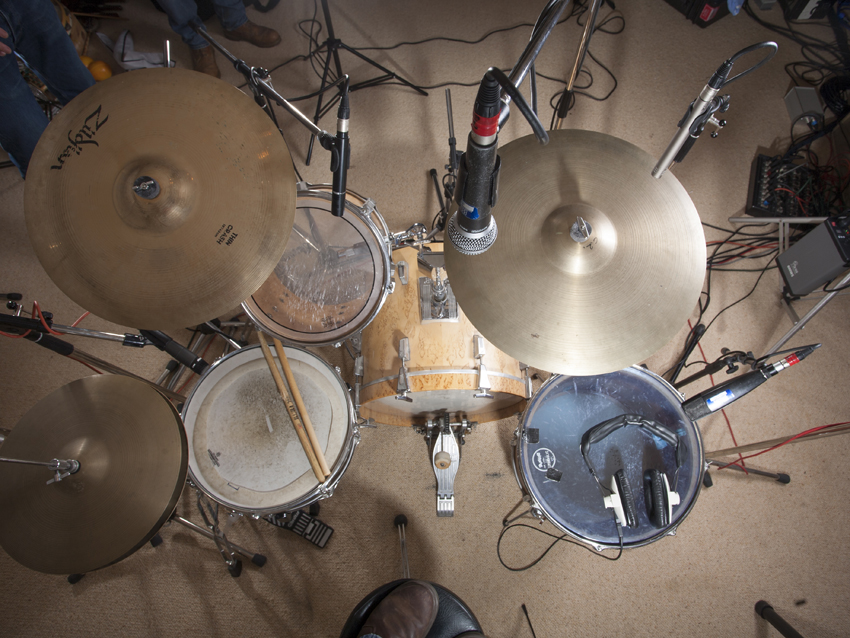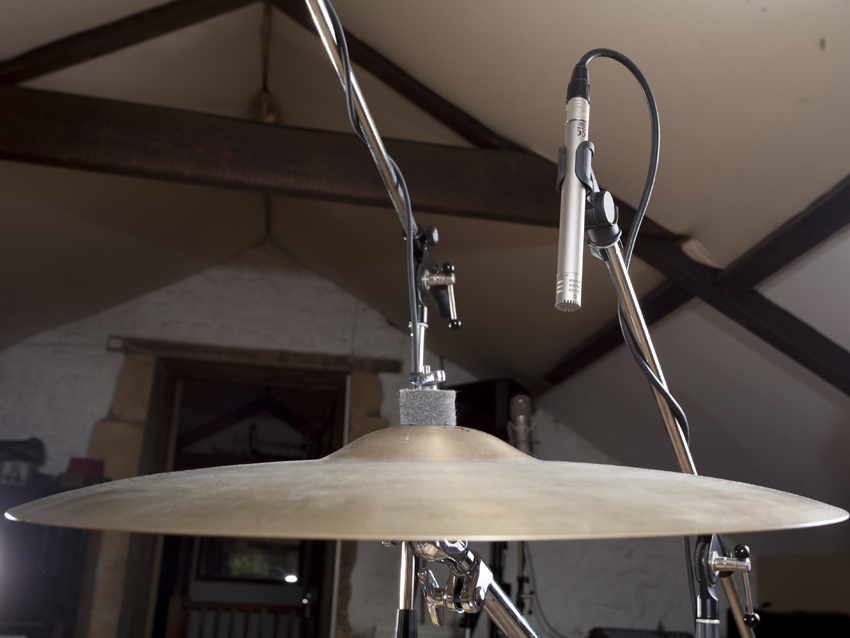How to mic up a drum kit for recording
Get your kit sounding right with these mic placement tips
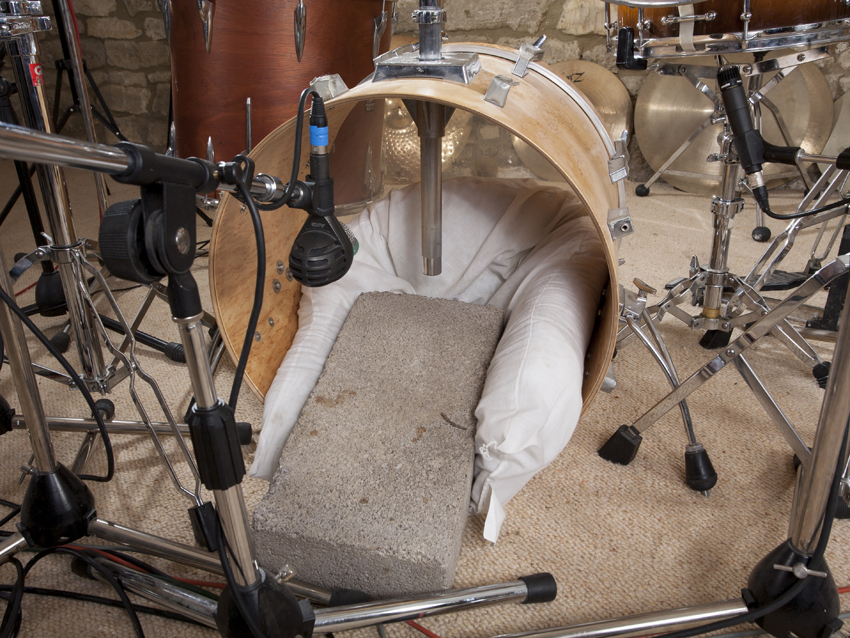
Kick
PRODUCTION EXPO 2013: There’s no ‘right’ or ‘wrong’ way to place mics on your drum kit but if you stick to the following guidelines you’ll be well on the way to getting a pro sound in no time.
Kick
The classic studio kick drum mic is the AKG D112 or it’s older relative the D12, and the orthodox position is on the back of the drum (the pedal’s on the front) about level with the rim and slightly off-centre. Some drummers don’t use a back skin which makes life easier and some cut a small hole out for the mic to get a look-in.
Kick drum mics all have an exaggerated low frequency peak for the boom and a high frequency peak for the click and because these peaks are at slightly different frequencies different mics can suit different kicks, so it’s worth trying different mics if you have them to hand. Alternative mics include Shure Beta 52 & 91 and the Electro-voice RE20, all of which are dynamic mics with large diaphragms suited to low frequencies.
Also check out:
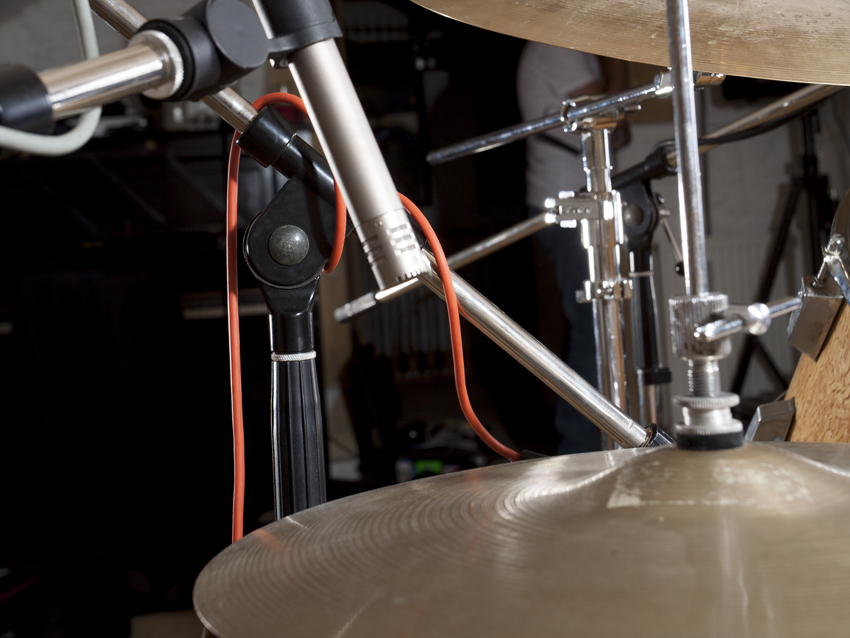
Hi-hat
The bright crispness of the hi-hat is best captured by a condenser microphone. Choices include the AKG C451 and C414 and the Rode NT5. Neumann pencil mics in the KM range are also great if you can get your hands on one.
Place it 4-6 inches above, half way between bell and edge and away from the snare drum as much as possible to restrict the snare spill. In the 80s when isolation was everything you’d sometimes find rugs hung on a mic stand arm between hat and snare mic as further anti-spill measures.
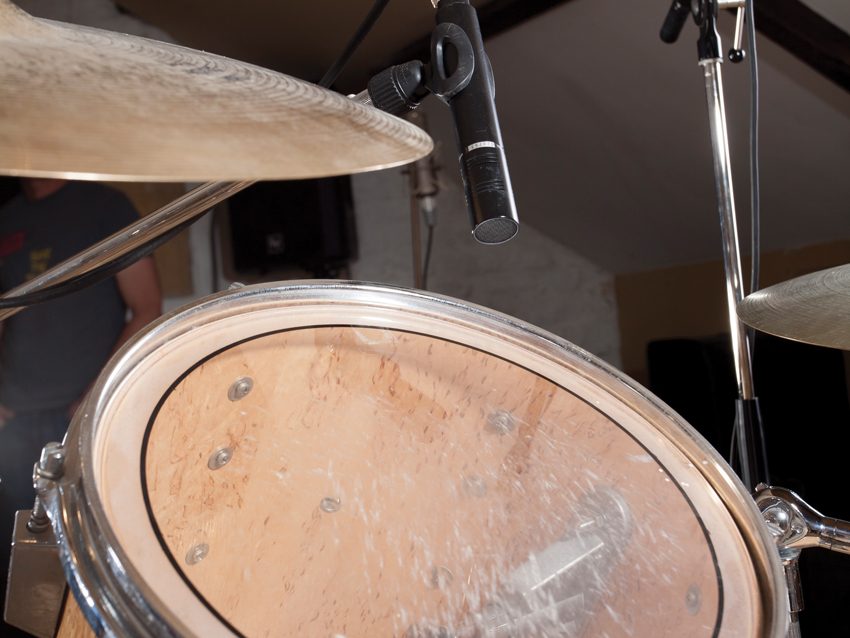
Toms
A spot mic on each tom is the orthodox way to go. Positioned in a similar manner to the snare drum a couple of inches above the skin and just inside the rim directed at the centre. The rack tom always suffers from snare spill and all toms suffer from cymbal spill but generally toms aren’t used much so can be gated out after the event.
The most popular studio tom mic by far is the Sennheiser 421. Other options include Beyer M201 and the Shure SM57 and 58.
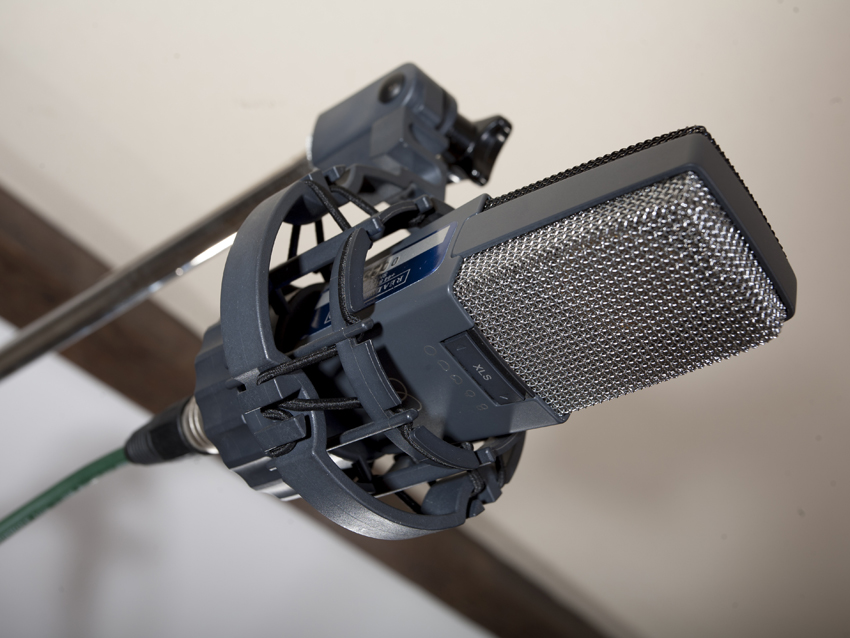
Overheads
To capture the top kit in general and more specifically the cymbal work, a pair of condenser mics are used over the top of the kit. They’re useful for providing a coherent picture to the whole kit into which you can place the spot mics. Without them the kit is a disparate bunch of unconnected sounds. Use a matched pair of the best condenser mics you can lay your hands on. The AKG 414 is usually first choice but AKG C451s and Neumann KM184s are equally good.
In the days of mono compatibility a coincident pair placed in the centre was a common technique but now most people opt for a split pair. Depending on the height of the ceiling, place them 6-8ft above the floor either side of the kit angled down to the centre of the playing area.
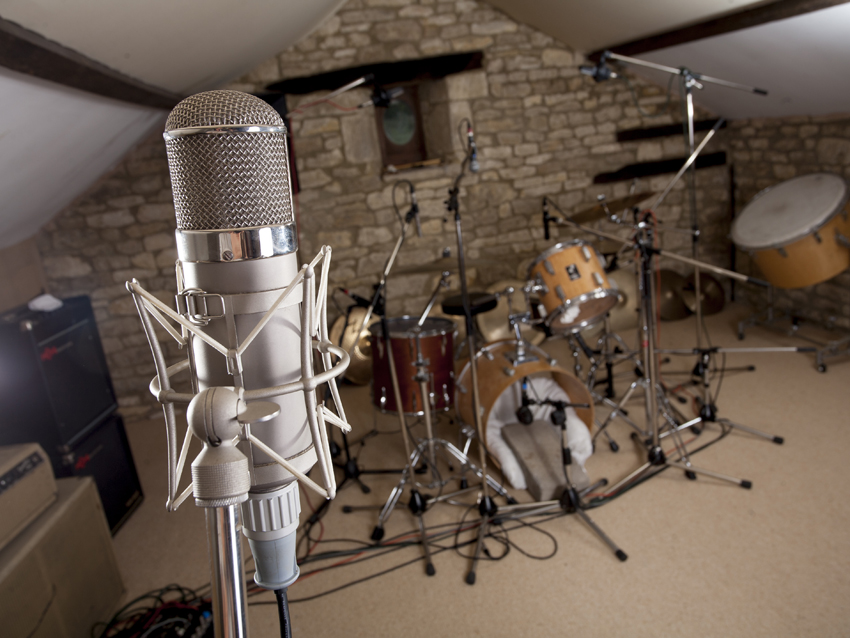
Room mics
A microphone or two to pick up the general room ambience is vital to add colour and character to the overall sound of your kit. A pair of room mics can be processed heavily and just added in slightly to the mix to give it the required energy levels as well as reinforcing the sense of space. A single mic works ok but for best results try a pair.
Ribbon mics are popular here, and have a mid-range character that brings the best out in a room: Coles 4038 and Royer 122s are at the top of that list. Good condensers and valve mics are also up to the job.
Start in the middle of the room with the pair equidistant from the kick drum. The brighter condensers and valve mics fair better nearer the ground to lessen the impact of bright cymbals. Ribbon mics work well around head height or lower.
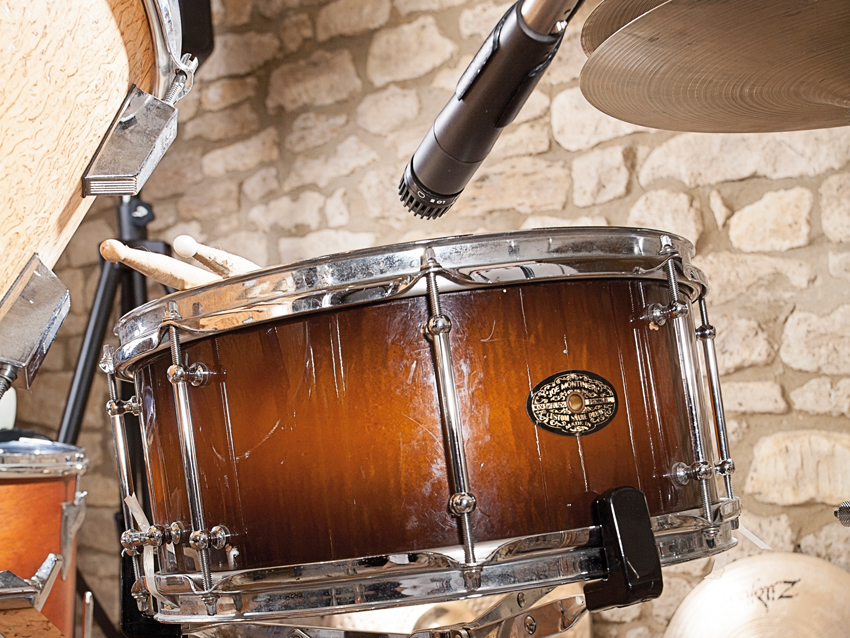
Snare
Placing the snare drum mics can be tricky for a couple of reasons: one, you want to avoid as much spill as possible from the hi-hat mic and two, it’s hard to weave the mic stand in between rack tom and hi-hat. A good starting position is one-to-three inches above the head just inside the rim pointing into the centre of the skin. Angle it away from the hi-hat if you can and below the level of the rack tom rim.
A mic underneath the snare (phase inverted) is a must to capture the brightness from the buzz of the snare wires. Place it close to the skin and directly at the wires. Spill from the bass drum is a problem despite the fact that you can safely roll-off the low frequencies so try and angle away from it. The classic snare mic is the Shure SM57 for both top and bottom.
